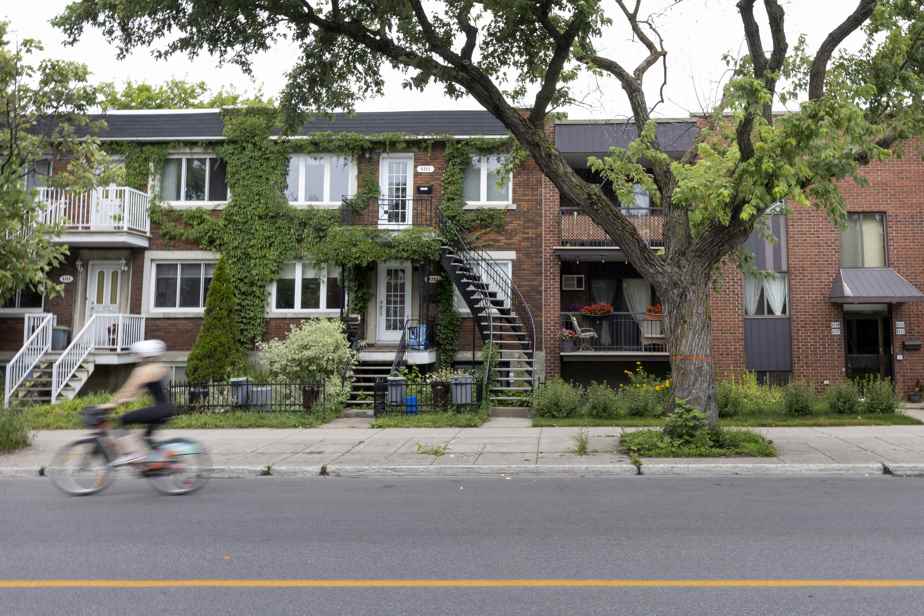The overheating of the real estate market during the pandemic will leave traces in the next assessment roll of the Montreal agglomeration which will be presented on September 14. The value of residential properties with less than 5 units should jump by 30 to 40% compared to the values listed on the municipal roll currently in effect.
Posted at 5:00 a.m.
The figures come from a study carried out by the firm of real estate data JLR for the exclusive account of The Press.
This rapid increase is linked to the boom in the Montreal real estate market during the pandemic, in 2020 and 2021.
According to this study, which analyzed some 20,000 transactions that occurred in 2021, the year serving as a reference for the preparation of the next roll, home owners should expect an increase in value of slightly more than 40% on average, while the value of condominiums will jump closer to 30%.
As for owners of small income properties with 2 to 5 units, commonly called plexes, they should see the value of their building appreciate by a percentage of between 30 and 40%.
The expected increase will be twice as large as in the 2020-2021-2022 roll, which took 2018 as the reference year. It posted an average increase of 13.6% in residential values.
The previous roll, that of 2017-2018-2019, showed an even lower average increase of 5.8% for the residential sector.
It is important to remember that a spectacular increase in values on the roll does not automatically result in an increase in the municipal tax bill. The property tax is calculated according to the property value, of course, but also the tax rate, which is determined by the municipal council when adopting the annual budget. Logically, an increase in values of 25%, for example, will be offset by a drop in the tax rate of the same order to keep tax revenues more or less constant.
Similar estimate
JLR’s estimate is in line with that made by the City of Montreal assessor, Bernard Côté, last January when he appeared before the City’s Finance Commission.
Mr. Côté had agreed to give elected municipal officials an overview of what the City of Montreal’s 2023-2024-2025 assessment roll will look like.
“It is clear that it is a role which is – for the residential sector – up to 30% [d’augmentation] “, had then indicated the municipal official.
Contrary to the roll in force (where the east of the island had experienced slight increases in value), this time, the variations in value are relatively homogeneous between the cities of the island of Montreal, as well as between the boroughs of the City of Montreal.
Most of the sectors are experiencing increases of around 30 to 50% in the case of houses. More affluent neighborhoods, however, will see a below-average increase in values. This is the case for Westmount, Outremont and Mount Royal. It is the opposite for the cities of the West Island, such as Dollard-des-Ormeaux, where the growth in values is close to 50%.
The city center has suffered
In the case of condominiums, the range of increases in values is wider, ranging from 25 to 40% for the vast majority of neighborhoods.
The exception to this rule are condominiums in downtown and Griffintown, which have been deserted during the pandemic, underlines Francis Cortellino, economist at the Canada Mortgage and Housing Corporation (CMHC).

PHOTO MARCO CAMPANOZZI, THE PRESS
Condominium towers in Griffintown
The Press had asked Mr. Cortellino to consult the evolution of the median price of homes resold through the Centris system between 2018 and 2021. Centris is the central database for real estate brokers.
Downtown and Griffintown’s loss of popularity will be reflected in the new role. The increase in condo values should be around 20%, less for certain areas within these two neighborhoods.
The role, which will come into effect on 1er January 2023, will be valid for three years. It is supposed to reflect the market conditions prevailing on the reference date of the 2023‐2024‐2025 roll, i.e. 1er July 2021.
Methodology
JLR’s analysis gives a good idea of the next land role, without achieving identical results. The City segments the island into nearly 3,800 homogeneous sectors (neighborhood units). The average variation is obtained by comparing the selling prices for 2018, the reference year of the next roll, to the values entered on the roll in force for all the properties in the neighborhood unit. Variations are also corroborated by the application of other valuation methods. For its part, JLR compiles sales according to boroughs and suburban towns. For example, if the firm counts 101 house transactions in 2018 in a given borough, it calculates the ratio between the price paid and the valuation of each of the 101 transactions. JLR then retains the median ratio, ie the ratio that divides the sample into two equal parts. Sales of new properties are excluded from the analysis, as are sales that are not representative of the market.

